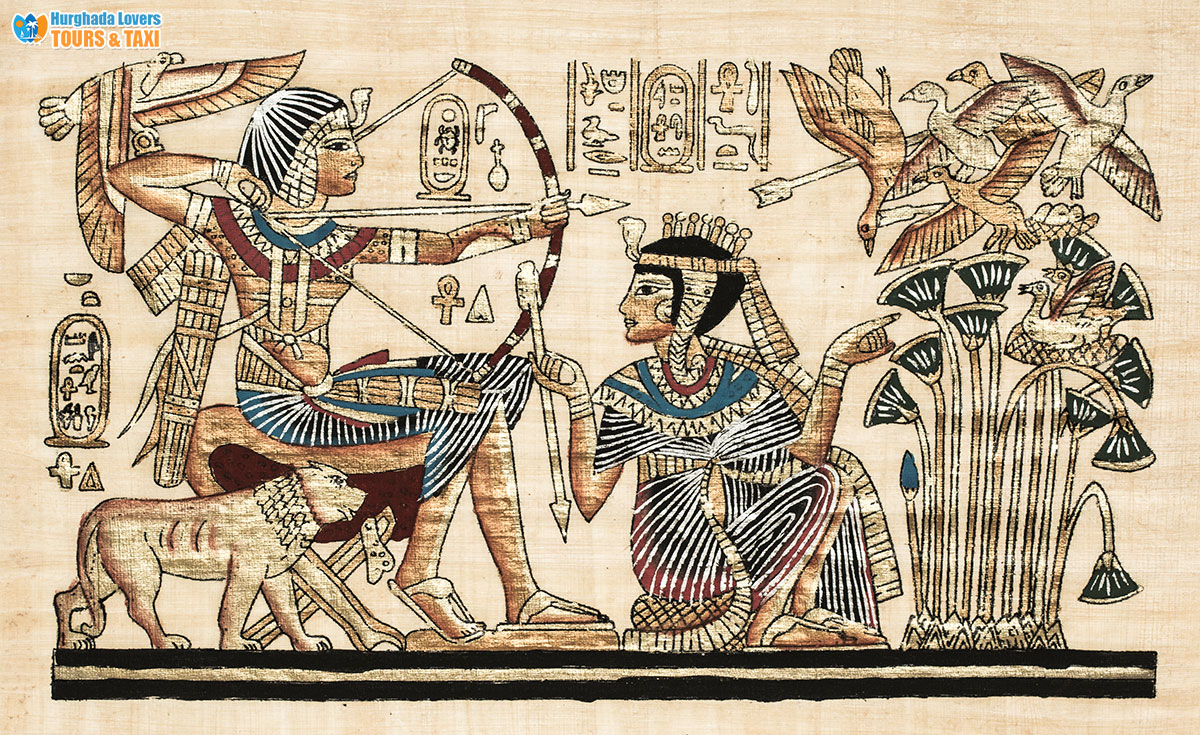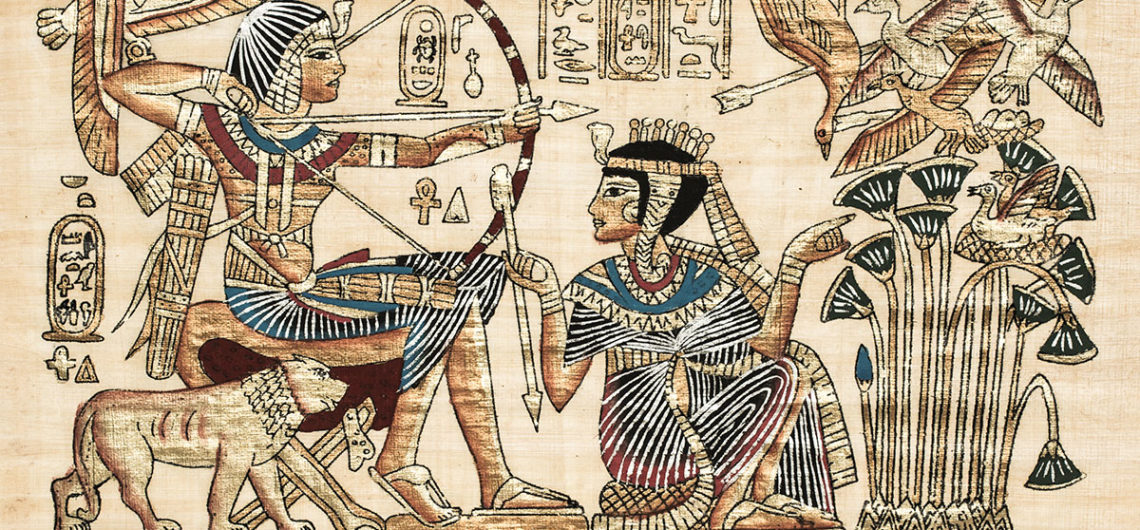The Egyptian Lotus Flower | Nymphaea lotus in Ancient Egypt
The Pharaonic Lotus Flower and its religious importance in the life of the ancient Egyptians in the civilization of ancient Egypt, history and facts about the importance of the lotus flower when the legendary Pharaohs, funerals, political, therapeutic, sexual, industrial, food and more about Ancient Egypt History.
The Egyptian Lotus Flower | Nymphaea lotus in Ancient Egypt
What does the Egyptian lotus flower mean?
The lotus flower enjoyed a great sacred place in the life of the ancient Egyptians as in Ancient Egyptian religion, and the lotus is a flowering aquatic plant named after the word given by the Greeks (Lotaz), a family of “water lilies”, with flowers characterized by petals or circular leaves and the cylindrical cornea prominent from the center to the top.
Floating on the surface of the water are its colorful flowers (white, red, pink) and the aromatic flowers have a long and thin stem, appearing on soft leaves resembling an inverted blue-green umbrella that can reach a diameter of up to two feet and gives the lotus its distinctive shape in water ponds.
The river lotus appears in the waters of rivers and open at dawn and close in the absence of the sun for five days as in Egyptian Mythology, and after the end of the fifth day, the flower petals fall to show in their place a green pod of a curved shape.
How many types of lotus flowers are there?
blue lotus flower
blue lotus flower, known as the “Blue Beshneen”, kills bees and is therefore called the bee killer. Known as “Sarbat”, from which comes the Egyptian word “sharps”, which is used to describe all that is beautiful, and its scientific name Carryl Nymphae, that is, the blue juria, which is developed to describe the Egyptian creation because it blooms at dawn and closes in the evening and therefore resembles the sun
What is the meaning of a purple lotus flower?
purple lotus flower, Starfish with a diameter of 15-20 centimeters at full aperture, with four green cut leaves of its outer surface and blue-white inside, with several long crowns with pointed tips and purple of blue and purple color.
The heart of the flower is the smallest golden, emitting many pink leaves. It is called sarat, known as Arab Beshneen, or ant eater, because it kills ants that approach it.
What does the white lotus flower symbolize?
The white lotus, also located in Egypt, was known as “Suschen”, from which the name Suzan came Arabic and her scientific name is Nymphae alba.
They grow in the waters of the Nile River and shallow rivers, but unlike the blue lotus, they bloom at night and close their crowns before noon the next day, then return at dusk to bloom, as if to complete the opening and closing cycle with the blue lotus.
White is a symbol of purity and clarity.
Tiger Lotus flower
And there is a tiger lotus or the white Egyptian water lily.
Nymphaea lotus, Egyptian white lily or tiger lotus is an aquatic plant with erect legs, with many branches and bright yellow flowers,
It rises up to 45 cm.
The Egyptian Lotus Flower is also the red lotus, which the Egyptians called (toast) and the Arabs knew it as the “Coptic Bagli”, which is of Indian origin and its flower is red in color and was introduced to Egypt in the range of 500 BC. from India.
Le lotus has taken on exceptional importance in ancient Egyptian heritage, and we can summarize it as follows…
What is the lotus flower symbolize?
Legendary Importance:
In one of the legends of Egyptian creation, the lotus flower appears as the first being that emerged from the blind man and created from him the universe, where the petals of its flower opened from the child sun God Ra “Egyptian deities” who dissipated the darkness and was shown from the opening of the lotus at dawn and closed in the evening wrapped in lotus petals.
Funerary significance:
The Egyptian Lotus Flower appeared on the Pharaonic Egyptian Tombs as Tombs of The Nobles in Luxor “Thebes”, The Pharaonic Tombs from Thebes in Luxor , where the deceased appeared with his daughter on the boat in the water where the lotus buds were picked for him.
The Mummy of King Tutankhamun from the Eighteenth Dynasty of Egypt and The New Kingdom period in ancient Egypt, which was discovered in the Tomb of Tutankhamun | KV62 within the tombs of the Valley of the Kings, was covered in a valley of lotus flowers.
Religious significance:
The columns of the Egyptian Temples resembled a lotus flower, and the blue type of “blue nymph flower” was sacred as in Mortuary Temples for exp. Karnak Temple, Mortuary Temple of Hatshepsut, Luxor Temple, with thin pointed leaves and narrow pointed toy leaves with a delicate scent that represented the scent of divine life. The blue lotus symbolized the little God of Memphis (God Nefertem) the master of perfume and symbolized the first solar flower.
The sacred lilies of the Nile were presented as offerings at funeral services. His remains were found covering King Tutankhamun body when his grave was opened.
The Egyptian Lotus Flower is the symbol of the Nile, where it imitates it in its form; its leaves are the branched branches of the Nile and its tige, and Venus the Nile delta, and the Nile had a God Hapi, who embodies the flood of the Nile, represented in the form of a man with breasts and a full belly, to symbolize the fertility that the Nile gives to Egypt, embodies “Hapi” sitting on the throne with the lotus flower on his head. Or connect the lotus flower (the emblem of Upper Egypt) with the Papyrus plant (the emblem of Lower Egypt) as in Geography of ancient Egypt.
Political significance:
The Egyptian Lotus Flower was and still is the symbol of Egypt, and the army took it as its emblem, and the honor of the Nile lily reached the extent that the Military of ancient Egypt took it as its emblem.
Nutritional significance:
Herodotus denies that the lotus roots taste sweet in Food in ancient Egypt and that its dried roots were crushed with flour in the Egyptian bread industry.
Industrial importance:
The lotus flower was one of the most important The Egyptian Lotus Flower used in Industry in ancient Egypt and the preparation of royal perfumes, skin powders and skin ointments and used in Medicine in ancient Egypt.
Artistic importance:
Le lotus was the most important element of art that marked the art of Architecture in ancient Egypt, Sculpture in Ancient Egypt, decoration, and painting, it was a masterpiece in its artistic form and was used in decorations, ship designs in Trade in Ancient Egypt and others as Festivals in Ancient Egypt.
Sexual importance:
The lotus flower symbolized the feminine, was taken care of in sexual practices because of its sexual effectiveness, and the Turin papyrus is full of sexual practices accompanied by theessence of lotus flower by women.
References The Egyptian Lotus Flower: The Book of Egyptian Civilization, Egypt
Hurghada Lovers best Tour Operator to provide daily tours to visit the Tourist attractions of Luxor by Hurghada to Luxor Day Trips and Cairo by Hurghada to Pyramids Day Trips to discover the secrets The Egyptian Lotus Flower. Book online when you come to Hurghada, El Gouna, Sahl Hashish, Makadi Bay, Soma Bay, Egypt.


